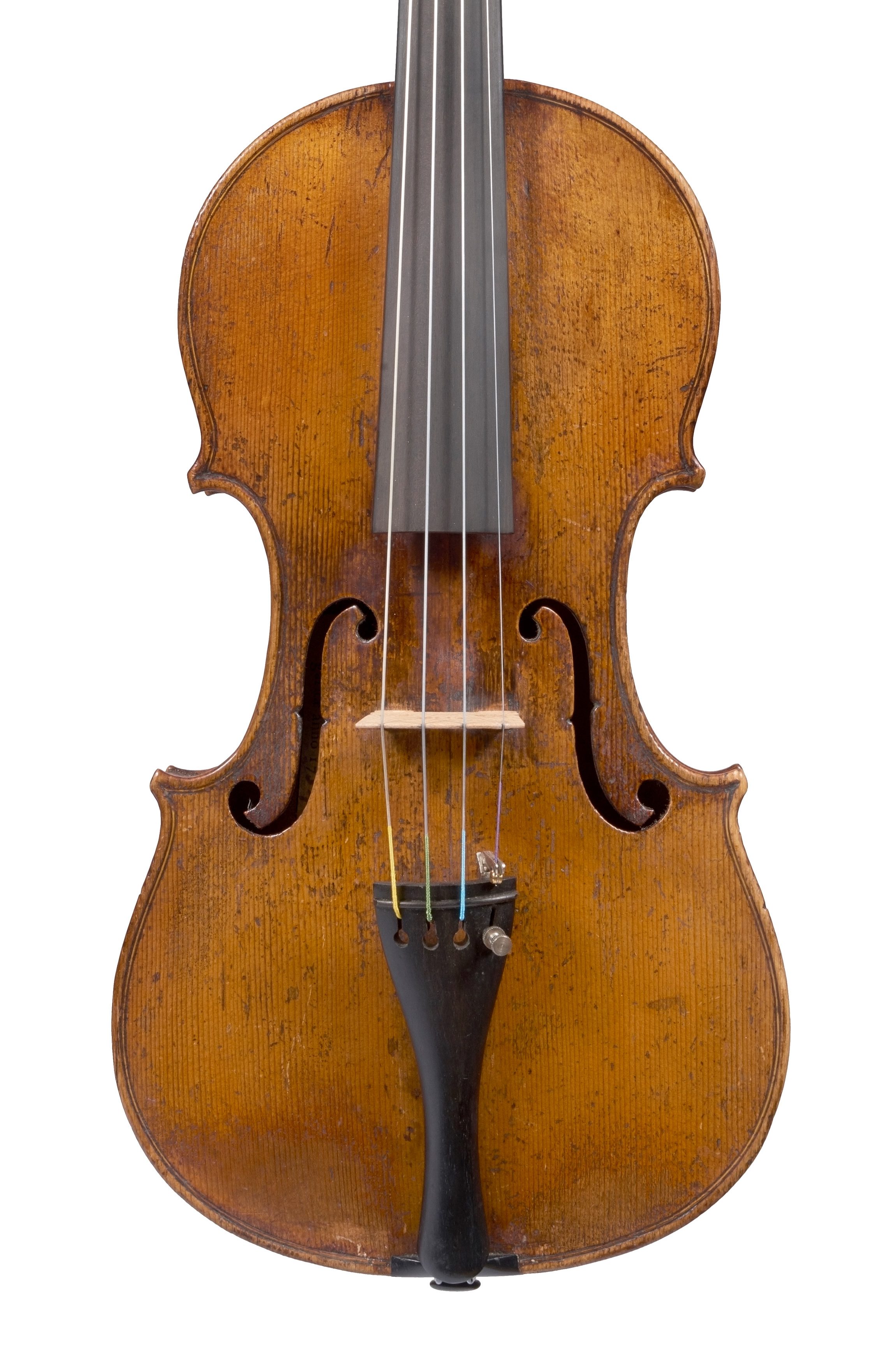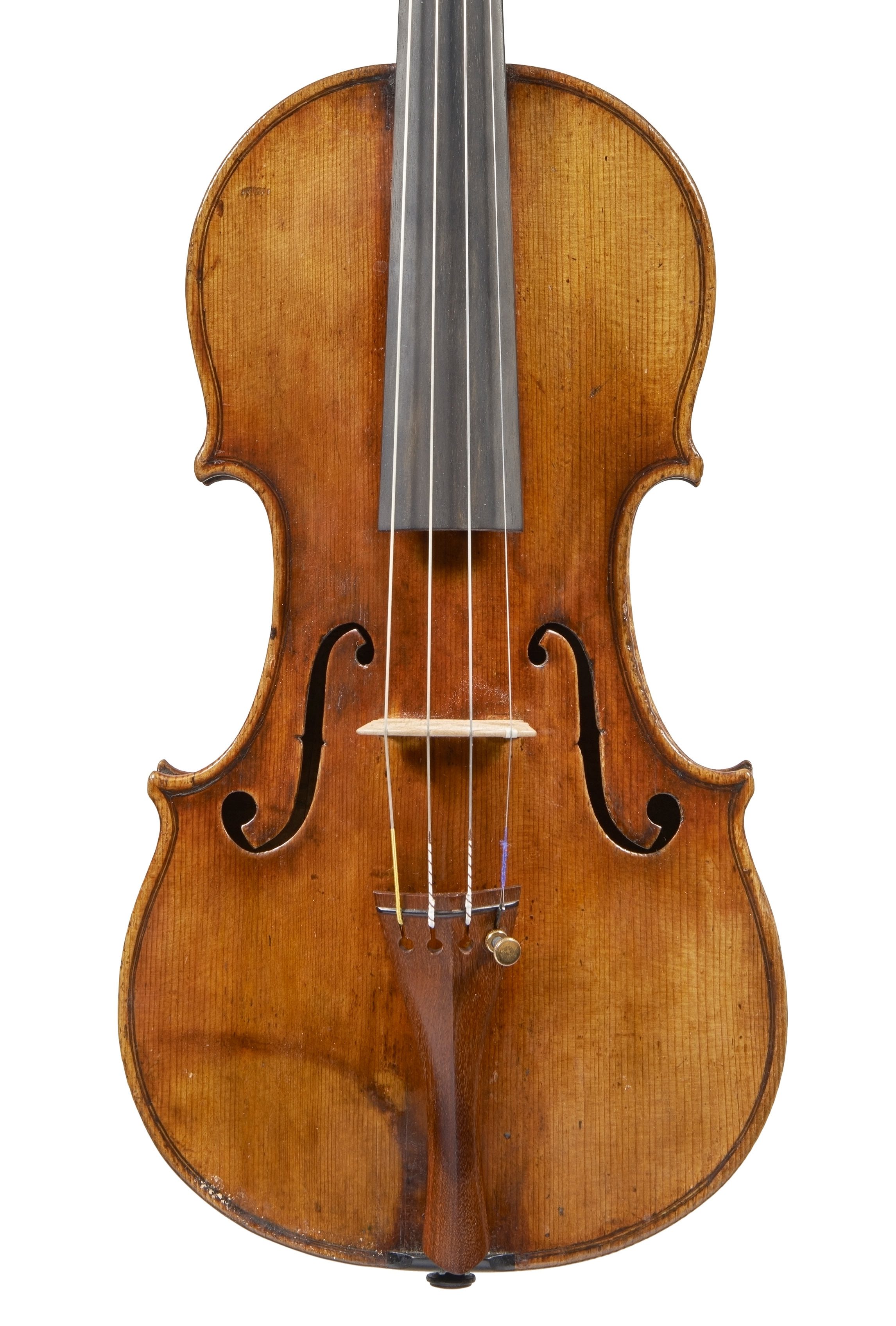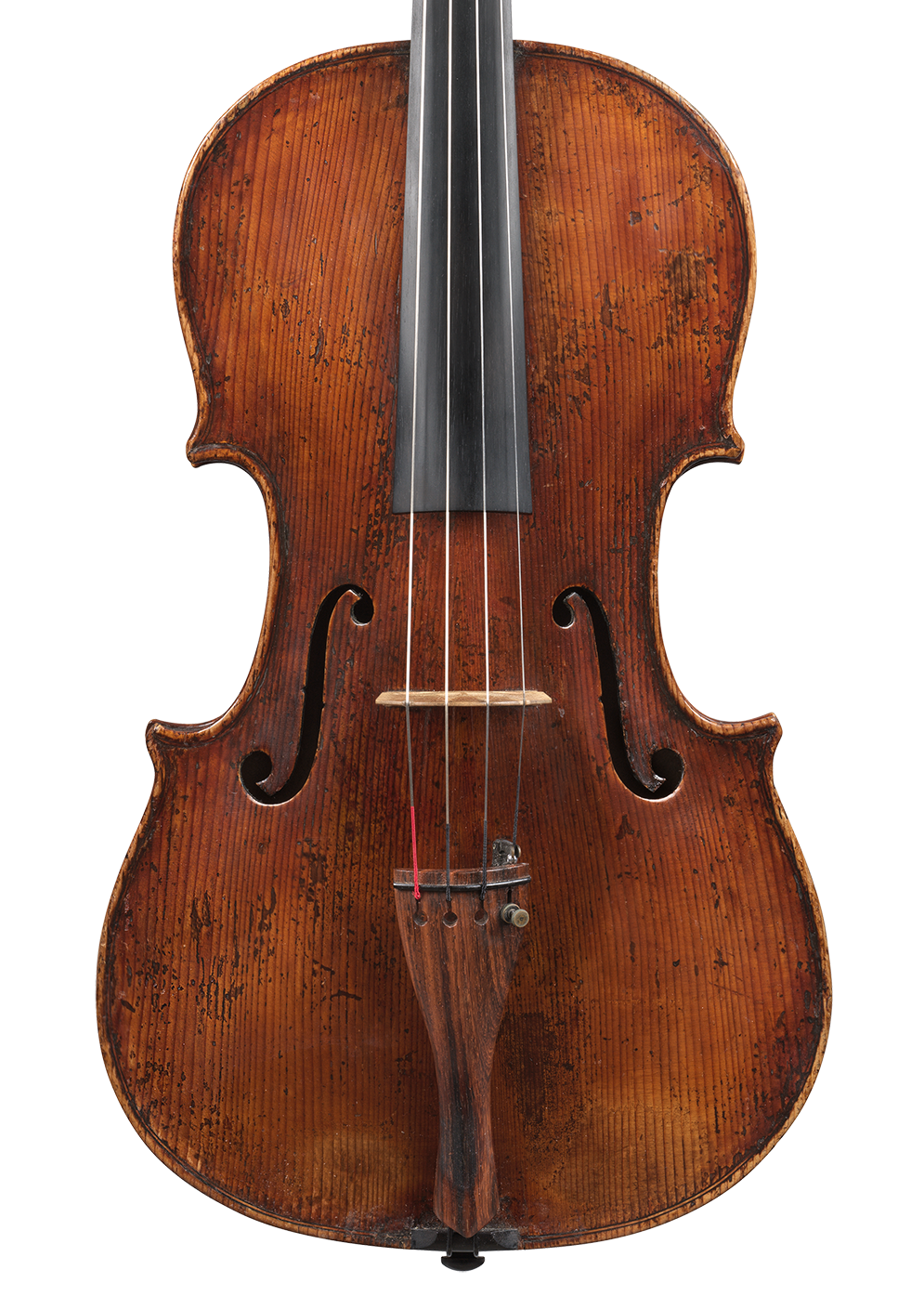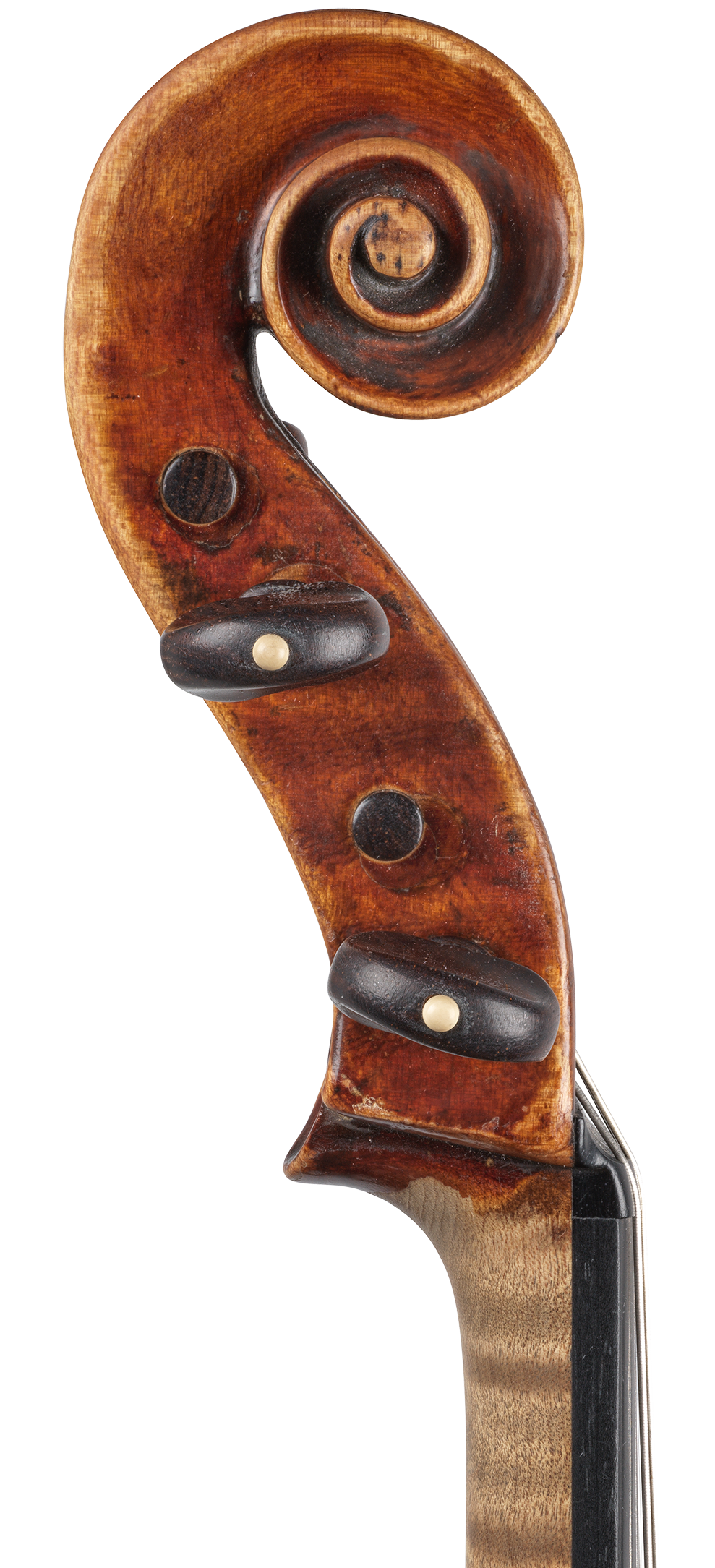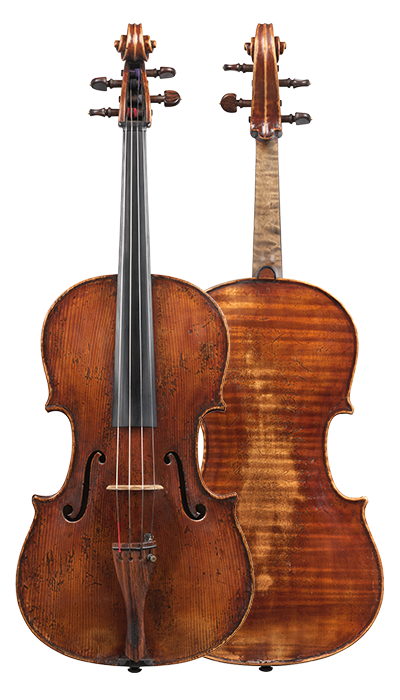Carlo Ferdinando Landolfi: His Life and Influence
John Dilworth examines a magnificent viola by one of the greatest Milanese makers.
Carlo Ferdinando Landolfi is a fascinating maker to analyse. His work is a mixture of many influences, and yet remarkably distinctive and consistently of the highest tonal quality.
The confluence of German and Italian traditions is inherent in his German birth in around 1710. We might assume that he had already been trained as a luthier, as certain Germanic traits in the scroll and sound holes persist through his later work. There is even justification in comparing his early work, in the form of the soundholes especially, with Alessandro Gagliano, the Neapolitan maker also strongly influenced by Füssen craftsmen established in his home city.
Landolfi made his appearance in Milan in the 1730s, old enough to have been fully trained, working alongside Paolo Testore, whose loose approach and full archings show in early examples. Before 1740, or around the time of Carlo Antonio Testore’s death in 1738, he seems to have been working in a way that was self-informed, better disciplined, and using finer quality wood than that seen in Testore family work in the period, which had been falling into a serious decline in quality for some years.
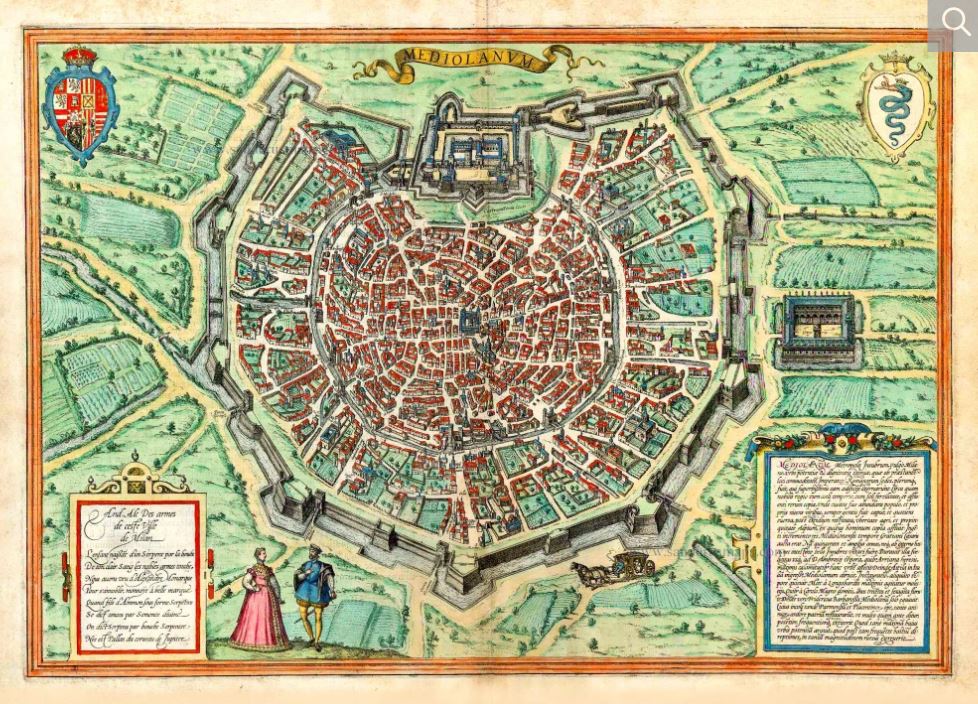
His outline is very distinctive, with an almost pointed form to the upper and lower bouts, and very rigid, straight approaches to the corners. The axe-shaped lower wings of the fs, and the extended last turn of the scroll are also typical, and reminders of a latent Germanic style. This well-proportioned 16” viola, dated 1765, embodies all these things, together with a beautifully shaped full arch which promises great tonal quality. What is remarkable about it is the clear influence of G.B. Guadagnini, adding another shade to Landolfi’s broad palette.
Guadagnini came to Milan in 1749, a new and dramatic force within the old Milanese violin making tradition. His striking and idiosyncratic workmanship had already been formed in his years in Piacenza and clearly had a strong impact on Landolfi.
This viola, with a beautifully shaped full arch, promises great tonal quality.
Interestingly, Guadagnini’s influence on this viola is not just stylistic, but technical. The two must have worked together at some point, and Landolfi here copies Guadagnini’s curious habit of deeply prick-marking the last spiral of the scroll, which still remains clear as a coil of black dots.
He also changed his edge work in alignment with Guadagnini, so that the corners are flattened and thinner than the surrounding edge, unlike the usual Amatese edge, which flares in thickness through the corners. He used locating pins in the plates very much in the style of Guadagnini, unlike any of the Testore, but this innovation at least seems to predate Guadagnini’s presence in Milan. The pins persist in his later work, but these other Guadagnini affectations do not. The varnish of this viola is a darker and less transparent red-brown than the best of Guadagnini’s Milanese work, which does stand amongst his very finest.
Guadagnini had already left Milan for Parma when Landolfi made this viola. All Carlo’s own mannerisms are still present, in the form of the scroll and fs, most clearly in the general outline, and certainly in the use of his own purfling, which is quite unlike Guadagnini’s.
Instruments are attributed to Landolfi in Milan up until 1783, and he seems then to have retired to the town of Balleno Laro near Lago di Maggiore, from which at least one label of 1788 exists. He was succeeded by his son Pietro Antonio, who was labelling his own work from about 1750, giving his father’s address at ‘al segno Serena’ in the via Santa Margarita.
Carlo was by some way the driving force of violin making in Milan over the course of his lifetime. The Testore family, inheritors of the wonderful Grancino tradition, had long relinquished any sort of authority or ambition, and Guadagnini’s presence in the city between 1749 and 1768 was clearly a great justification and support for Landolfi’s more diligent and expressive work, which he was able to pursue with some energy, judging by his large surviving output.
His work is a complex fusion of many influences yet remains perfectly individual and tonally forceful – all the qualities of classical Italian work, sustained and embodied by a man who was, after all, an outsider.
Recent Posts
Categories
- Feature Type
- Instrument Type
-
Maker
- Albani, Mathias (2)
- Amati, Andrea (8)
- Amati, Antonio & Girolamo (6)
- Amati, Girolamo II (6)
- Amati, Nicolò (6)
- Balestrieri, Tommaso (3)
- Banks, Benjamin (1)
- Bazin, Charles Nicolas (1)
- Bergonzi Family (1)
- Bergonzi, Carlo (2)
- Bergonzi, Michele Angelo (2)
- Bernardel, Auguste Sébastien Philippe (2)
- Bisiach, Leandro (2)
- Bultitude, Arthur Richard (1)
- Bussetto, Giovanni Maria del (1)
- Camilli, Camillo (2)
- Cappa, Gioffredo (2)
- Carcassi, Lorenzo & Tomaso (1)
- Ceruti, Giovanni Battista (3)
- Chanot, George Adolph (1)
- Cuypers, Johannes Theodorus (1)
- Dalla Costa, Pietro Antonio (1)
- Deconet, Michele (1)
- Fendt, Bernard Simon II (1)
- Fendt, Bernhard Simon I (1)
- Gabrielli, Giovanni Battista (1)
- Gagliano, Alessandro (2)
- Gagliano, Ferdinando (1)
- Genova, Giovanni Battista (1)
- Gisalberti, Andrea (1)
- Goffriller, Francesco (1)
- Goffriller, Matteo (1)
- Grancino, Giovanni (4)
- Grancino, Giovanni Battista II (1)
- Guadagnini, Gaetano II (1)
- Guadagnini, Giovanni Battista (7)
- Guarneri 'filius Andreæ', Giuseppe (3)
- Guarneri del Gesù, Giuseppe (5)
- Guarneri of Mantua, Pietro Giovanni (2)
- Guarneri of Venice, Pietro (3)
- Guarneri, Andrea (3)
- Götz, Conrad (1)
- Hill & Sons, W.E. (1)
- Kennedy, Thomas (1)
- Knopf, Carl Heinrich (1)
- Landolfi, Carlo Ferdinando (1)
- Lott, John Frederick (1)
- Lupot, Nicolas (2)
- Mantegazza, Pietro Giovanni (2)
- Mariani, Antonio (1)
- Montagnana, Domenico (2)
- Panormo, Vincenzo Trusiano (1)
- Parker, Daniel (1)
- Peccatte, Dominique (1)
- Platner, Michele (1)
- Pressenda, Giovanni Francesco (1)
- Rayman, Jacob (1)
- Retford, William Charles (1)
- Rivolta, Giacomo (1)
- Rocca, Giuseppe Antonio (2)
- Rota, Giovanni (1)
- Rugeri, Francesco (3)
- Sartory, Eugène (1)
- Scarampella, Stefano (2)
- Schwartz, George Frédéric (1)
- Serafin, Santo (1)
- Sgarabotto, Gaetano (1)
- Sgarabotto, Pietro (1)
- Simon, Pierre (1)
- Stainer, Jacob (3)
- Storioni, Lorenzo (3)
- Stradivari, Antonio (14)
- Stradivari, Francesco (1)
- Stradivari, Omobono (1)
- Tadioli, Maurizio (1)
- Taylor, Michael (1)
- Tecchler, David (2)
- Testore, Carlo Giuseppe (1)
- Tourte, François Xavier (4)
- Tubbs, James (1)
- Voller Brothers (1)
- Vuillaume, Jean-Baptiste (10)
- Watson, William (1)
- da Salò Bertolotti, Gasparo (2)
- Author
- Charity
-
In the Press
- Antiques Trade Gazette (3)
- Archi-magazine.it (1)
- Art Daily (2)
- CNN Style (1)
- Classic FM (2)
- ITV (1)
- Ingles & Hayday (4)
- Liberation (1)
- Life Style Journal (1)
- London Evening Standard (1)
- Paul Fraser Collectibles (1)
- Rhinegold Publishing (1)
- Sotheby's (1)
- Strings Magazine (2)
- Tarisio (2)
- The Fine Art Post (1)
- The Strad (7)
- The Times (1)

